Release date: 1993
Shipped with: CD32 units only
Media: New ROM (1 MB) and software
Major enhancements:
- Added: CD filesystem built-in
- Added: Code (nonvolatile.library) for handling NV-RAM
- Added: Special AKIKO chip that converts planar to chunky graphics
Example media:
| Boot Screen | Save Screen | Locale | CD Player | Demo CD | Unreleased Spectrum Analyzer |
|---|---|---|---|---|---|
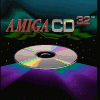 |  | 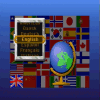 | 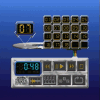 | 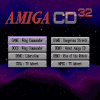 | 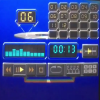 |
| Descriptions and Part Numbers | |
|---|---|
| One CD-ROM | |
| [CD Title?] PN: ? | |
To see hidden credits that change the language choices to the people responsible for the CD32, (ROT13 encrypted in the CD32's boot ROM), go to the Preferences screen, select a language, then push the up/down arrows according to the pattern of text on the remote control. Peter Cherna, via Maciek Sees, contributed the following:
"The correct sequence is:
FWD, FWD, REV, FWD, FWD, FWD, REV, REV, FWD, FWD, RED FIRE, but remember that it must be called in the language setting window and the gamepad must be connected to port 1; not to port 2. I previously thought that the language should be set to English or French, but it doesn't matter."BRAIN: Jeff Porter Software Hardware James Barkley Jr Chris Coley Dave Brumbaugh Hedley Davis Peter Cherna Dante Fabrizio Chris Green Ed Gunther Darren Greenwald Bill Richard Allan Havemose George Robbins Jerry Horanoff Randell Jesup Chips David N. Junod Bob Raible Spencer Shanson Bill Thomas Michael Sinz Martin Taillefer Mechanical Design Jim Hooper Artwork: Herb Mosteller Jerry Hartzler Chuck Wooters Jim Sachs ... And Many More ...Maciek S. adds: "Recently I remembered that there is a second part of the Easter Egg on CD32—it gives you a way to call up this screen (it is similar to the Easter Egg of the first part—example video). The only difference is that at the end we press the blue button, not the red one, and the message depends on the previously set language; for example:
FWD, FWD, REV, FWD, FWD, FWD, REV, REV, FWD, FWD, BLUE FIRE"AMERICAN: !... Hi Lori ...! !... Hi Justin ...! DEUTSCH: Theresa, remember March 5th, 1993, the day we got Engaged? I promise to love you forever! - Your Michael (Michi) ENGLISH: Hi Mum. Did the bells fall off? FRENCH: Dearest Cathy, The day we met was the beginning of the happiest time of my life. It is with love and humility that I thank you for being you. DUTCH: Good Luck, Dave and Kathy 05/08/93 Adam, Adam, Adam... You're the Best!!! You call yourself a KING ??? FINNISH: This is Lise: Always remember our lucky 13th! "Love,Peter" SWEDISH: Cynthia Kimberly Michael Hugs & Kisses from your Dad! CHINESE: Thus spoke the Master Ninjei: "If your application does not run correctly, do don't blame the operating system!" any other: This space for sale
- Peter Cherna notes that: "The Locale screen consisted of a language selector and a spinning globe, overlaid over a grid of flags. The concept was that the flag of the selected language should be animated and waving. The designer of this screen made sure that the flags corresponding to the selectable languages were fully visible. Several other flags are partially obscured by the language selector and the globe, and do not wave. I myself spent a bunch of time cleaning up the flags to look better and more accurate. By complete coincidence, the only completely-visible flag that was not used for a language was the Canadian flag. So the two Canadians on the team (Martin and myself) arranged it so that if you accessed the secret messages, then selected either English or French, that the Canadian flag would wave, in place of the US, British, or French flags."
- Maciej Sees shares his discovery and notes regarding CD32 modifications to nonvolatile.library enabling support for 2 kB memory instead of 1 kB, and a Ferroelectric RAM (FRAM) memory switch supporting five 2 kB memory modules.
- Chris Young notes that Workbench 3.0 was supplied on CD-ROM for the SX32 by Eyetech Group Ltd.
- Ronald van Dijk notes that a Workbench 3.0 CD-ROM used to be sold by Vesalia. This CD contained files from the original Workbench 3.0 disk and some additional files for the CD32. In total, the CD contained 1 MB of data, and did not appear to have been officially released by Commodore or Amiga Inc., but by an unknown German company.
- Jan Erik Olausen notes that a friend owns a CD32 with ROM version 40.60. The output is posted below:
- Olaf Barthel notes: "As far as I know today, V40.60 was used in the CD32. It was the only operating system version that ever shipped with the CD32; there were no further updates to it." He notes, however, that this information was difficult to verify.
- The CD32 did not come with Workbench 3.1 on CD-ROM. Thomas Kessler and Ross Vumbaca confirm that their CD32 units did not come with a Workbench CD-ROM; only with games and demo CDs.
- ROM PNs: 391640-02 (v40.56), 391640-03 (v40.60)
ROM Version = 3.1 $0028003C (40.60) DoIO = $00F80906 CBump = $00F824EE TrackIO = $00FC529E Interrupt 1 = $00F8116C Interrupt 2 = $00F811C4 Interrupt 3 = $00F81204 Interrupt 4 = $00F8125C Interrupt 5 = $00F812FC Interrupt 6 = $00F81346 Interrupt 7 = $00F832AA